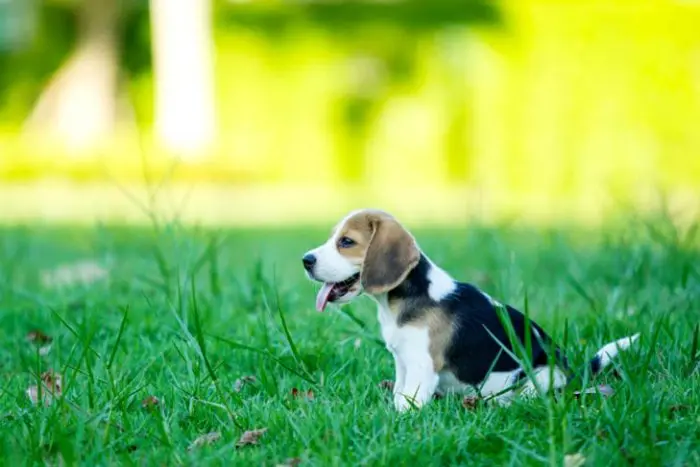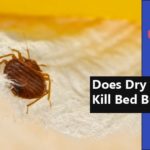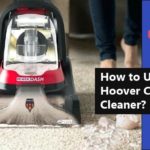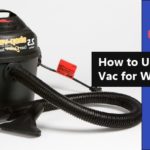Canine parvovirus (Parvo) is a contagious virus that affects dogs of all ages. The virus is particularly lethal for puppies and unvaccinated dogs. It’s important to get rid of Parvo in your yard so that your dog doesn’t get infected. But, how can you get it out of your yard?
Eradicating this highly contagious virus from your yard isn’t easy and requires a lot of persistence. Parvo is hardy and can survive for months outside a host. That makes it difficult to eliminate. However, it’s still possible and today we are going to tell you how. So, keep reading.
Why Get Parvo Out of Your Yard As soon as Possible?
You should try your best to get rid of Parvo in your yard as soon as possible. Once the virus has landed on your compound, any dog that gets into the space will be infected. Unfortunately, there’s no 100% effective way of killing Parvo. But, you can minimize the danger that comes with this virus by using some recommended home remedies. We also recommend that you keep your puppies out of your yard until any surviving Parvovirus dies.
Causes of Parvovirus in Dogs
Parvo spreads very easily, which makes it so dangerous. An infected dog will spread the virus for several days before any symptoms can start to show. Additionally, a dog can still spread it for up to three weeks after recovery.
As mentioned, the virus is contagious. That means an infected dog will likely contaminate anything that it touches or steps on. Parvo can linger on nearly any surface for several months. It can survive on your clothes and shoes if you have a dog with or had Parvo.
Note that your dog can still contract Parvo even when it hasn’t come into contact with an infected dog. It can become infected by simply licking or sniffing a contaminated surface. Once your dog is infected, the virus spreads quickly inside its body. The dog will then start exhibiting symptoms such as:
- Loss of appetite
- Vomiting
- Diarrhea
- Dehydration
In some cases, the virus can spread to the heart and the bone marrow, which can be fatal. With that in mind, there’s every need to ensure that your compound doesn’t have a trace of this virus.
Dogs Most at Risk of Parvovirus
Some dogs are at a higher risk of contracting Parvo than others. The ones that are most likely to contract the virus are puppies below four months old. Moreover, dogs that haven’t yet been vaccinated are most likely to get infected with Parvo.
There are some dog breeds also that are most likely to get the virus, including:
- German Shepard
- English Springer Spaniels
- Doberman Pinschers
- American Staffordshire Terriers
There’s no scientific explanation why these particular breeds are most likely to get infected with the virus so far. We recommend that you ensure your puppies are vaccinated to reduce the risk of infection. The antibodies in the blood of puppies aren’t enough to protect them from this virus.
Adult dogs also need booster shots to enhance protection against the virus. The shots are recommended after every three years. There’s still a likelihood of a vaccinated dog contracting the virus, which means that getting the booster shot regular is important. If your dog was infected with Parvo and it’s now vaccinated, you may need to go for an antibody blood test. The test will show the types of antibodies still active in its system.
How To Get Parvo Out of Your Yard?
1. Bleach
Bleach happens to be one of the most effective disinfectants to fight Parvovirus in your yard. As mentioned, you should mix ONE part with THIRTY parts of water. Apply this solution to any surfaces outdoors and indoors.
The water-bleach solution is great for decontaminating indoors, especially if your dog lives inside with you and has recovered from Parvo currently. Apply the solution on the floors, the dog’s water and food bowls, furniture, and anywhere that your dog has sat on or licked. You should also use bleach to disinfect your outdoor furniture living in your yard.
Don’t make the mistake of thinking that if you clean your yard all will be well. Remember that this virus is highly contagious. So, you need to also clean everywhere in your home. You should also clean your carpets by steaming them. A good steam cleaning will not only prevent Parvo but also eliminate dander and odors.
The downside of using bleach is that it will kill plants and grass. So, when you apply it to your yard, your grass will likely dry out. However, the most important thing is to eradicate the traces of any lingering Parvo in the yard and grass can grow again later.
2. Rescue Disinfectant
It’s also effective and you can use it to minimize the risk of Parvo in your yard. Applying rescue disinfectant is a little more complex as it’s generally less effective when a large amount of organic matter is involved.
You should flush your yard first with water and allow it to dry under the sunlight. Repeat this 2 or 3 times. Try to be as thorough as possible. Then mix eight ounces of Rescue disinfectant with one gallon of water. Spray the resultant solution on the entire area with a hose-end sprayer. You need to get the yard you wish to get Parvo out as wet as you can. For that, you may need to apply this disinfectant multiple times for several months. You need to consistently apply the Rescue as many times as possible to eliminate it. That’s because Parvo is resilient and can survive for months.
3. Sniper Disinfectant
As the name tells, this disinfectant is used in hospitals. That means it’s friendly to pets, humans, and the environment. Sniper kills bacteria and viruses such as Parvo in yards and healthcare facilities. It’s quite effective at fighting Parvo.
Sniper is composed of Chlorine dioxide as the main ingredient. Additionally, it’s non-corrosive, quick to kill harmful organisms, and friendly to organic materials. It’s easy to use this disinfectant, unlike Bleach. You don’t need to mix it with water. You can even spray it on your dog or use it to wash your hands.
4. Virkon-S Broad Spectrum
This disinfectant is commonly used in the poultry industry. That means it’s animal-friendly and you can use it to get rid of Parvo in your yard. Mix one part of this disinfectant with 99 parts of water. Make sure you put on gloves while you handle Virkon-S.
Tip: Before you spray Virkon-S or Sniper on your yard, ensure you remove any furniture available. That’s because Parvo thrives in dark areas in which sunlight is unable to access. It’s also most effective if you spray on dry grass during summer. Turn over any rocks and mulch before spraying the disinfectant to ensure that the virus has nowhere to hide. Spray 2 to 3 times. If your yard is large, divide it into sections and spray them one by one thoroughly.
How Long Can Parvovirus Survive?
We mentioned that Parvo can survive for months. Generally, the virus is very resilient and can survive at room temperature indoors for about two months. The virus is also resilient even to many commonly used disinfectants and cleaners.
Parvo can survive up to years outdoors if the place isn’t hit by direct sunlight. For this reason, you must clean your yard. You should get rid of dog feces in your yard because an infected dog spreads the virus every time it defecates. If the feces are left out there, other dogs become vulnerable to the virus. So, you have to remove any feces as soon as possible.
While you do that, you should wear gloves and utilize a pooper-scooper. When you’re done, clean your clothes and shoes using a mixture of water and bleach. You should throw the pooper-scooper away.
What’s more, you should spray the areas of your yard where the dog visits frequently using a solution of thirty parts water and one part bleach. You should also ensure that your dog doesn’t go to this part until any lingering virus dies hopefully when the grass dries. Throw any outdoor toys away and if the dog has a house, wipe it thoroughly.
You should also use the water-bleach solution to clean your dog’s water and food bowls. Also, wash all bedding and clothes using a detergent with bleach. Wipe down tables, walls, floors, and all surfaces using the water-bleach solution. Use an appropriate shampoo to clean upholstery and carpets.
If your dog is suffering from Parvo currently, confine it to a room for at least one month after recovery. That will reduce the spread of the virus and the number of areas you’ll have to clean or disinfect.
Final Thought
Parvo is dangerous. It can harm any dog, especially those below four months old. The virus is also resilient and can survive in your yard for months. You have to get it out of your yard for the sake of your furry friend. There are several disinfectants that you can use as explained above. Follow the advice in this article and eliminate any lingering Parvovirus in your yard.






